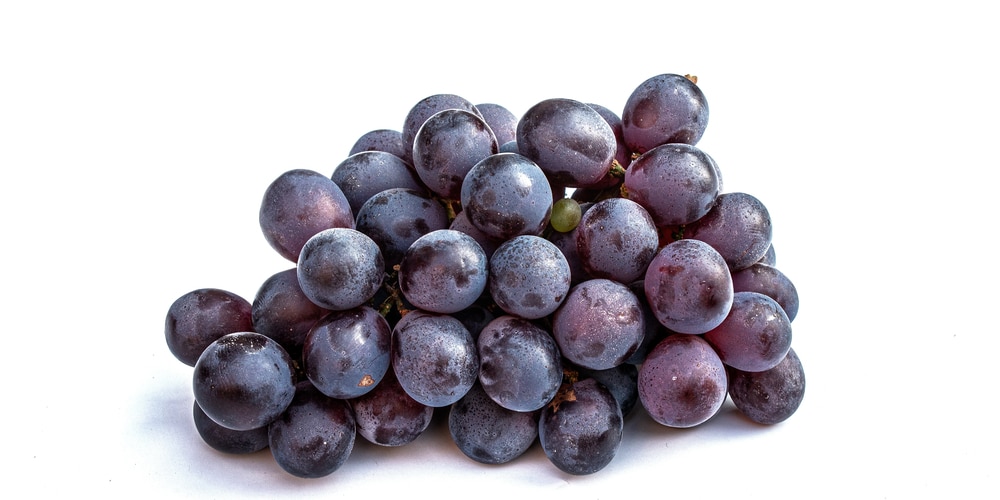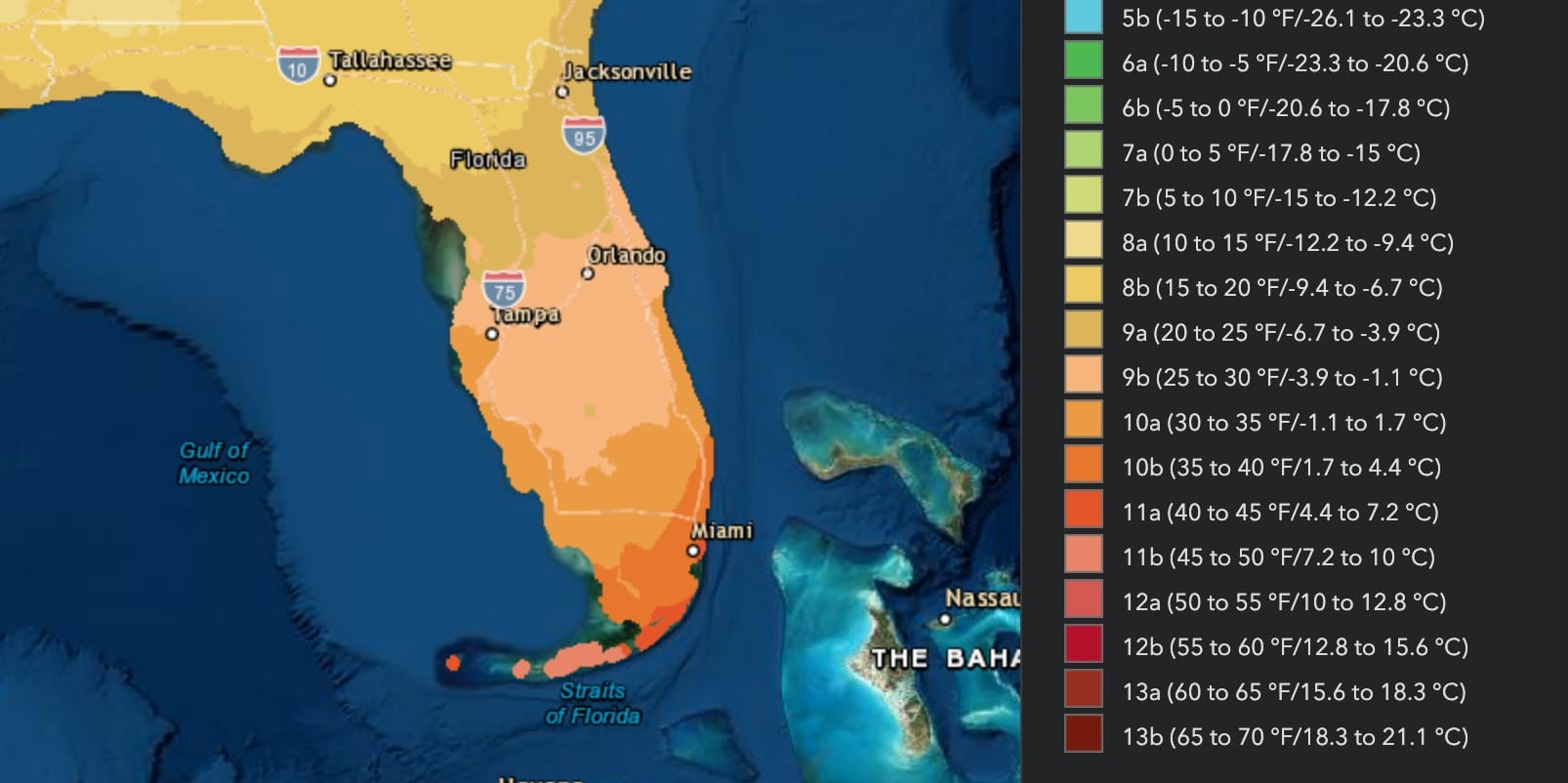You know those juicy, sweet grapes you can find at the grocery store in Florida? The ones that are so good they’re worth the price tag? Not many of them grow here. That’s because most grapes need a long, cold winter to get started, and Florida doesn’t have any.
So, can you grow grapes in Florida? Some grape varieties do just fine – the Muscadine and Bunch varieties, and when planted correctly with other fruits, vegetables, or flowers, will produce fruit year-round. If you want your garden to be successful this season and next, then make sure you plant these two types of grapes!
What are Muscadine and Bunch Grapes?
Muscadine and bunch grapes are two types of grapes that grow well in Florida. Muscadines are a type of grape native to the United States, and bunch grapes are a type of grape introduced to the United States from Europe.
Both types of grapes grow well in Florida because they are adapted to the warm climate and the sandy soil. Muscadine grapes are especially well-adapted to Florida because they can withstand high temperatures and drought conditions. Bunch grapes also do well in Florida, but they require more water than muscadine grapes do.
The Benefits of Muscadine and Bunch Grapes
Muscadine and bunch grapes are both excellent sources of antioxidants, beneficial for overall health. Muscadine grapes have a higher antioxidant content than other grape varieties, so they’re perfect for you.
Antioxidants scavenge harmful toxins and byproducts that can cause inflammation and damage cells, leading to various diseases. So incorporating muscadine grapes into your diet can help protect your cells against age-related damage and inflammation.
The Best Time to Plant Muscadine and Bunch Grapes in Florida
The best time to plant Muscadine grapes in Florida is early fall. The best time to grow Bunch grapes in Florida is early spring.
Muscadine grapes are the only grape native to the United States, and they thrive in the warm, humid climates of the Southeast. They can be planted throughout most Florida but prefer full sun exposure and well-drained soil, preferably growing in USDA zones 7 and higher.
Bunch grapes are a type of European grape that was introduced to America by Spanish settlers. They grow well in most USDA zones except zone 11. Bunch grapes need at least six hours of sunlight per day and prefer fertile, well-drained soil.
How to Care for Muscadine and Bunch Grapes in Your Garden
The easiest way to care for your muscadine or bunch grapes is by pruning them annually. Pruning helps keep the vines healthy and productive and increases the number of berries per cluster. Muscadine grapes can be pruned in late winter/early spring before new growth begins.
Bunch grapes should be pruned in late winter/early spring before new growth begins or in late summer after the harvest is over.
Fertilize your grapevines with a balanced fertilizer (10-10-10) twice a year: once in early spring before growth begins and again in midsummer after the harvest is over. Water regularly, especially during periods of drought. Mulch around the vine’s base to help retain moisture in the soil.
You can harvest muscadine grapes from late August to early October. Bunch grapes can be harvested from late September to mid-November.
Things to Lookout For
When growing Muscadine and Bunch grapes in your garden, be sure to look out for the following:
- Powdery mildew: a fungal disease that causes a white powdery film to form on the plant’s leaves.
- Black rot: a fungal disease that causes black lesions on the fruit and leaves of the plant.
- Anthracnose: a fungal disease that causes brown lesions on the fruit and leaves of the plant.
- Vine borers: a pest that bores into the plant’s stems, causing the vine to wilt and die.
- Japanese beetles: a pest that feeds on the leaves and fruit of the plant.
- Spider mites: a pest that feeds on the plant’s leaves, causing them to turn yellow and dry up.
- Scales: a pest that sucks sap from the leaves and fruit of the plant, causing them to wilt and die.
- Bunch rot: a bacterial disease that causes the berries to rot on the cluster.
- Botrytis bunch rot: a fungal disease that causes the berries to rot on the cluster, often resulting in significant crop loss.
- Crown gall: a bacterial disease that can cause stunting or death of the vine.
Be sure to keep an eye out for these pests and diseases and take appropriate action to control them if they occur. With proper care, your Muscadine and Bunch grapes will thrive in your garden!
Other Fruits and Vegetables that Can Be Planted With Muscadine and Bunch Grapes
Some other fruits or vegetables that can be planted with Muscadine and Bunch grapes are blueberries, strawberries, blackberries, tomatoes, bell peppers, eggplant, and okra.
When planting these companion plants, make sure to space them appropriately so they can get the most sun and yield the best results. For example, plant blueberries about 18-24 inches away from Muscadine grapevines.
Related Article: Florida Native Blueberry Plants
Can You Grow Grapes in Florida? Conclusion
If you’re looking for a fruit native to the United States, thrives in the Southeast, and can be grown in most of Florida, then Muscadine grapes are a perfect choice. Bunch grapes are also a good option, but they require more care than Muscadine grapes do.
So if you’re looking for an easy-to-grow fruit that is high in antioxidants, then Muscadine grapes are a great choice!


